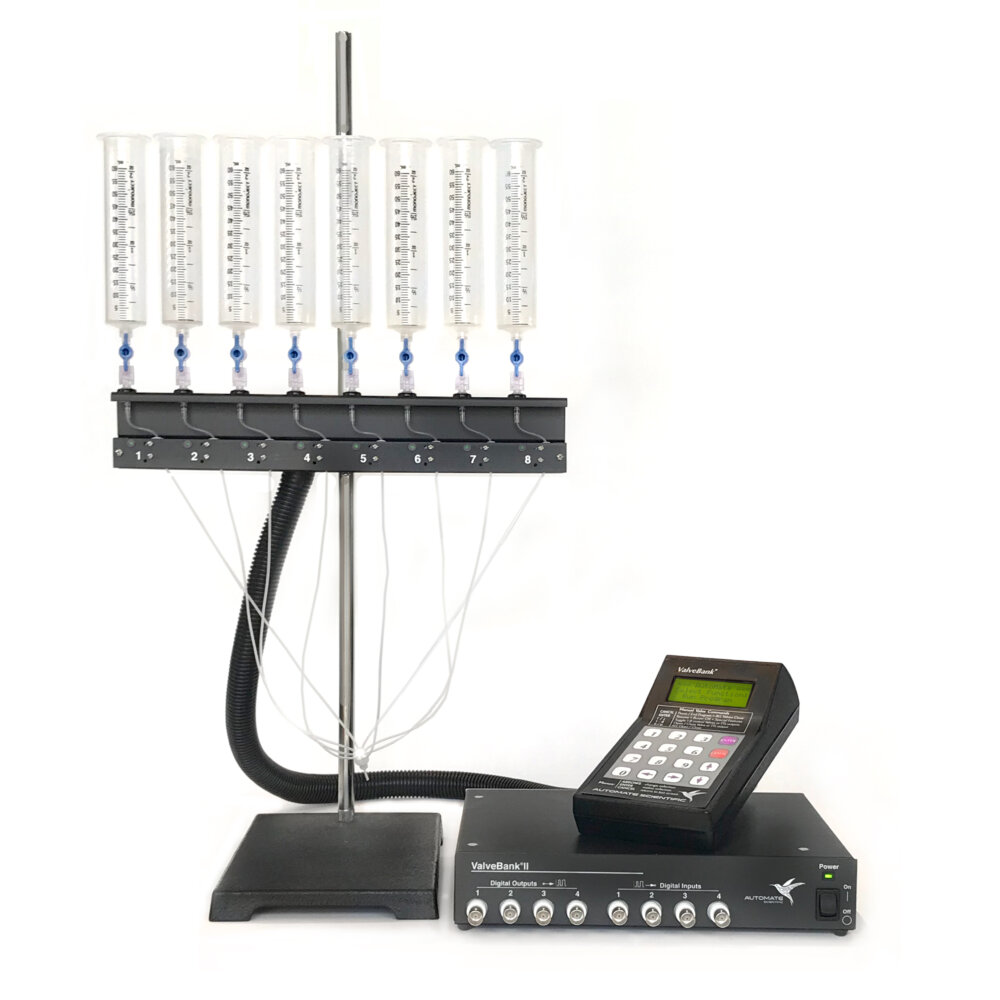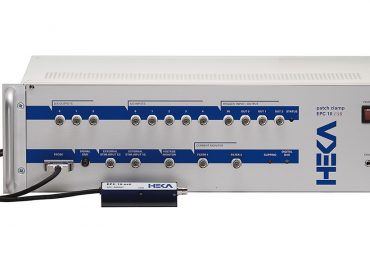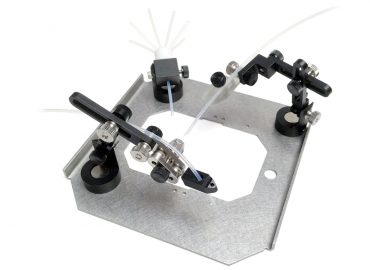A Guide to AutoMate Perfusion System Configuration
Simplifying a confusing range of selection options

Digitimer has represented AutoMate Scientific for over 20 years and during this time their product range has expanded from a limited range of perfusion systems to an array of products, including digitally or manually perfusions systems, temperature controlled perfusion pencils and even heated microscope stage chambers (QuickStage). Each system may be tailored to meet the specific needs of the researcher and below we discuss the major types of Perfusion System that are available and the sorts of decisions that need to be considered when choosing options for a system.
1. Gravity, bath perfusion systems
AutoMate Perfusion Systems are complete gravity, bath perfusion systems. You can choose the number of channels (different liquids), the type of valve controllers (ValveBank or ValveLink) and one of three different kinds of valves (pinch, PTFE-inert, and Lee valves).
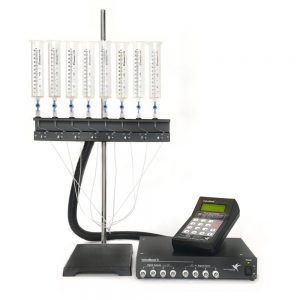
Everything you need for a regular gravity perfusion system is included Controller, valves, reservoirs, ringstand, 1/16” i.d tubing and 4-, 8-, or 16-into-1 micro- manifold with flow regulator. Gravity PTFE-inert systems include drippers and a reservoir bracket.
This Perfusion System is ideal for switching solutions flowing into a perfusion chamber for slice electrophysiology, oocytes, imaging, etc. with flow rates from near zero up to 6-10 ml/ minute. We usually recommend “pinch” valves (cheapest and easiest to keep clean) unless you need faster switching.
The ValveLink controller is designed for those who have digital/TTL outputs from their computer — for instance from data acquisition software like pCLAMP, SutterPatch, Patchmaster, WinWCP, MetaMorph, etc. or I/O hardware with software like LabView or MATLAB.
Alternatively, the ValveBank controller is completely programmable without needing a computer. It is ideal for setups without computer control or imaging software with only 1-2 digital trigger or shutter outputs.
2. Pressurised, fast, local drug application
For customers needing faster switching times (ligand-gated channels, etc.) Digitimer recommends local drug application, via “spritzing” or “superfusion.” This method means the perfusion tubes meet in a smaller manifold with a tiny tip for squirting solution directly at a patch or region of interest. AutoMate Scientific’s Perfusion Pencil can achieve switching times below 10 milliseconds WITHOUT the need of “steppers” or piezo switchers.
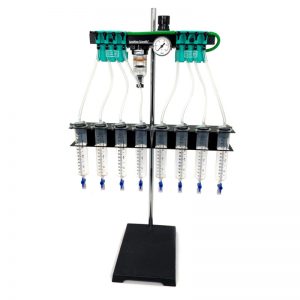 This sort of manifold combines 4, 8 or 16 tubes into a single, removable tip with a micro dead volume of 2-3 μl. When the perfusion system’s valves upstream switch from one liquid to the next, the change happens inside the Perfusion Pencil tip resulting in very fast switching times.
This sort of manifold combines 4, 8 or 16 tubes into a single, removable tip with a micro dead volume of 2-3 μl. When the perfusion system’s valves upstream switch from one liquid to the next, the change happens inside the Perfusion Pencil tip resulting in very fast switching times.
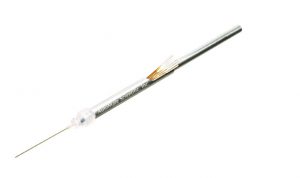 For researchers who need faster switching times, steadier flow rates, fine microliter delivery or small pipette tips, we recommend adding a Pressure Upgrade to the perfusion system. These pressurized syringe reservoirs with regulator push liquids out much faster than gravity, especially with small Perfusion Pencil tips. Air pressure is much more quiet (electrically and audibly), more smooth and more reliable than peristaltic pumps.
For researchers who need faster switching times, steadier flow rates, fine microliter delivery or small pipette tips, we recommend adding a Pressure Upgrade to the perfusion system. These pressurized syringe reservoirs with regulator push liquids out much faster than gravity, especially with small Perfusion Pencil tips. Air pressure is much more quiet (electrically and audibly), more smooth and more reliable than peristaltic pumps.
Electrophysiologists often need their solutions bubbled with Carbogen for slice oxygenation. For many years, AutoMate Scientific’s Pressure Upgrade Kit was incompatible with bubbling because the syringe reservoirs are closed air-tight. However, AutoMate have now created the new Oxygen8™ Bubbled Pressure Upgrade which simultaneously bubbles all of the solutions and pressurizes them.
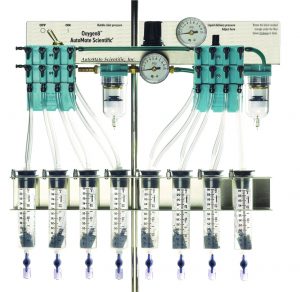
3. Temperature control
AutoMate Scientific’s standard perfusion systems are all room-temperature by default, but we offer two temperature control options:
1) ThermoClamp® inline heater
2) BubbleStop™ syringe reservoir heater
The ThermoClamp maintains your solution and bath temperature to within 1.0 °C (often within 0.1 °C) using a thermocouple in your perfusion chamber and another in the heater. It shares a similar design to the Perfusion Pencils mentioned above, for rapid solution switching from a fine removable tip while also maintaining 37 °C or any desired temperature between ambient and 50 °C.
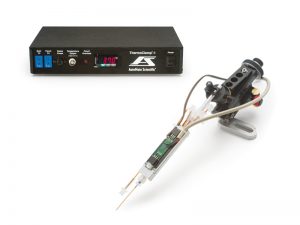
When used with cold solutions (i.e. stored in the refrigerator overnight), inline heaters can create bubbles inside their tubing. Many people mistakenly believe these bubbles come from air leaking into the tubing, but they actually form because warm liquids cannot hold as much gas as cold solutions. The solutions release gas when heated, and cause bubbles which can interrupt your perfusion flow.
AutoMate Scientific has designed an economical syringe heater block called the BubbleStop™ which pre-heats the liquids so they off-gas before entering your tubing.
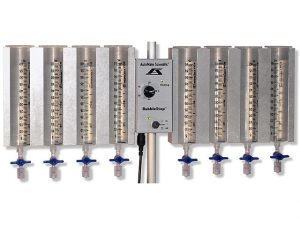
Want to find out more?
This guide provides a very superficial insight into the options available, but to find out more, please visit the individual product pages or get in touch with us to request a quote. Remember to include as much detail as you can, so our specialists can make informed product recommendations.
